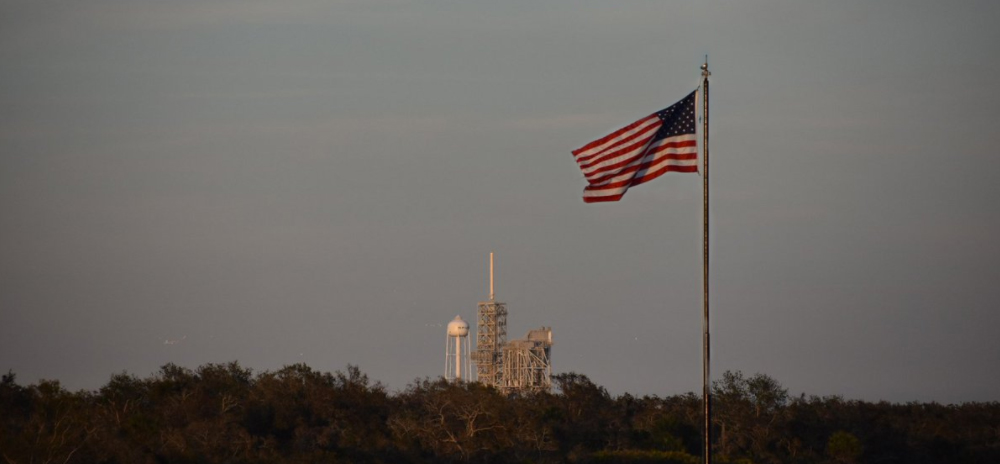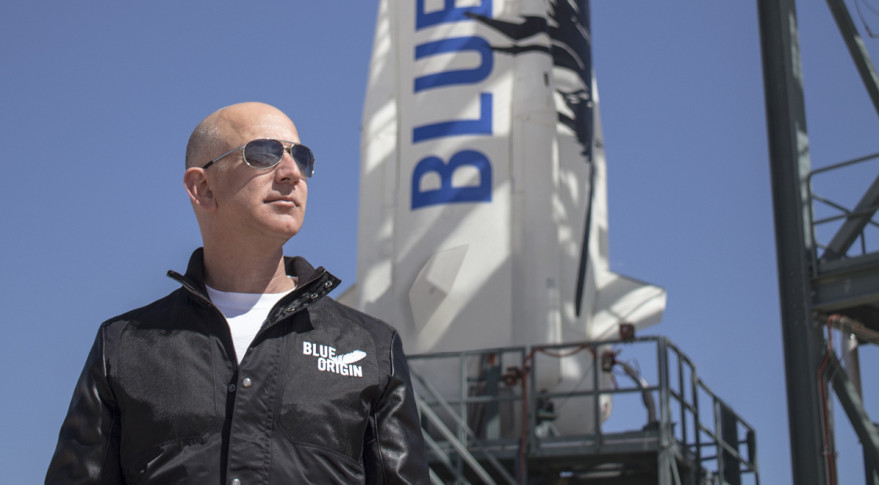Today’s Star Letter is from Robin Seemangal.
***
NASA’s Kennedy Space Center on Florida’s space coast is called the gateway to the stars. That’s where I am writing this Star Letter and I hope it finds you well. It’s early in the morning, just after sunrise. I’m sitting on the grass in front of the giant countdown clock that has become famous over the years. A worn American flag flies full-staff from a pole nearby. Sounds of wildlife echo in the distance and an eagle flies low over the complex.
Behind me is the gargantuan Vehicle Assembly Building which on the right day, could have its own weather. The building housed the Saturn V rocket before it took the first humans to the Moon and hosted the vehicles of NASA’s celebrated Space Shuttle program.
It is the world’s largest single-story building.
Way in the distance, barely visible above the many tree lines that populate Kennedy Space Center, is the very site where Neil Armstrong and Buzz Aldrin were launched on their historic mission. Launch Complex 39A. A pad that hasn’t seen fire since 2011.
We’ve accomplished so much in the half a century we’ve been pushing out toward the stars. Many of those accomplishments from this very place. But where are we going?
That’s why I’m writing to you today. To tell you that no matter how bad things may seem out in the world, humans have not lost their longing for exploration and discovery.
As I write to you, NASA’s giant countdown clock is at around T-minus 3:00 hours and counting down to what should be a routine mission to launch supplies, science and hardware to the International Space Station.
Routine is actually an incredible thing.
I’ve seen about 20 launches take off from right here at Florida’s space coast and even though each flight is an incredible achievement in itself, requiring the mastering of so many disciplines across a spectrum of engineering fields and sciences, with every launch comes a bit more normalcy. But if you think of every launch as humanity inching its way to a more permanent foothold in space, then there’s a bit more urgency and drama to it.
I grew up in Queens, New York right by John F. Kennedy International Airport. Planes flew overhead quite a few times per hour. All kinds too. Small private planes to jumbo jets all soared through the sky over my house and for a young man, it stirred wonder and curiosity about the breakthroughs in human flight. Over the years, the flights out of the airport became plenty and more routine. This was everyday life. And this is what I’ve seen emerging during my last two years reporting here on the space coast.
We are becoming a space-faring species.
As I sit on the grass at the facility’s press site, I can’t help but think that over the next couple of years, the spaceport will be transformed into a bustling hub for space exploration and rocket deliveries that more resembles a busy mass transit terminal. There will be a dozen companies using the foundation that NASA has built over the years to carry out their own vision whether it’s delivering satellites to orbit, landing robots on the moon, or building massive space ships to carry human colonists to a new world.
This morning’s launch is a step in that new direction. Launch Complex 39A, once the site of the Apollo 11 liftoff and the site that saw many space shuttles depart to help build the Hubble Telescope and the space station, is now owned and has been refurbished by SpaceX. They will use it for the first time this morning to launch their Dragon capsule to low-Earth orbit where it will dock with the space station.
The company was started by Elon Musk with a singular vision: to make humans multiplanetary.
Their plan is straightforward: To be the first to perfect reusable rocket technology and drastically reduce the cost of space travel. SpaceX has so far recovered 8 of their rockets after delivering a payload to orbit. For years, spent rocket boosters have been fated for destruction after use. Today, SpaceX has begun to realize the potential of “flight-proven” rockets and will use it as the key to unlocking their first major expedition into the solar system: Mars.
At the same spot that SpaceX will launch this morning’s mission to the space station, they intend to launch the first humans to the red planet from there in about 15 years. And they won’t stop at Mars. That’s why reusability is so important.
A Mars missions is going to be the most technologically complex endeavor ever undertaken by man and will probably be the most costly thing we’ve attempted.
The architecture of transporting humans across the solar system will require technology that can be relaunched and reused multiple times. For instance, if we want to visit the Jupiter’s moon Europa, which many scientists believe could harbor alien life in its massive saltwater ocean, we could launch that expedition from Mars.
Traveling to Europa and other destinations beyond Mars is actually part of SpaceX’s long-term vision.
It doesn’t matter who makes it to Mars first and quite frankly, while there seem to be multiple companies envisioning their own ways to colonize the world, the complexity and costs will force them to pool their resources.
We live in interesting times and over the course of the next two decades, we’ll see ourselves transform dramatically into a two-planet species and into a society that thinks about ourselves in the context of a larger universe.
That is what exploring the cosmos is all about. Not just expanding our presence, but expanding the scope of how we view our lives and our future.
I hope my brief letter appealed to your sense of adventure and I hope that in some small way, I’ve convinced you that:
Humans continue to do the extraordinary. (Click to Tweet!)
 Robin Seemangal is a Space Reporter, with a focus on NASA and advocacy for space exploration for the New York Observer. He’s also written for Popular Science and Wired Magazine. He was born and raised in Brooklyn, where he currently resides. You can find him on Twitter and Instagram.
Robin Seemangal is a Space Reporter, with a focus on NASA and advocacy for space exploration for the New York Observer. He’s also written for Popular Science and Wired Magazine. He was born and raised in Brooklyn, where he currently resides. You can find him on Twitter and Instagram.









